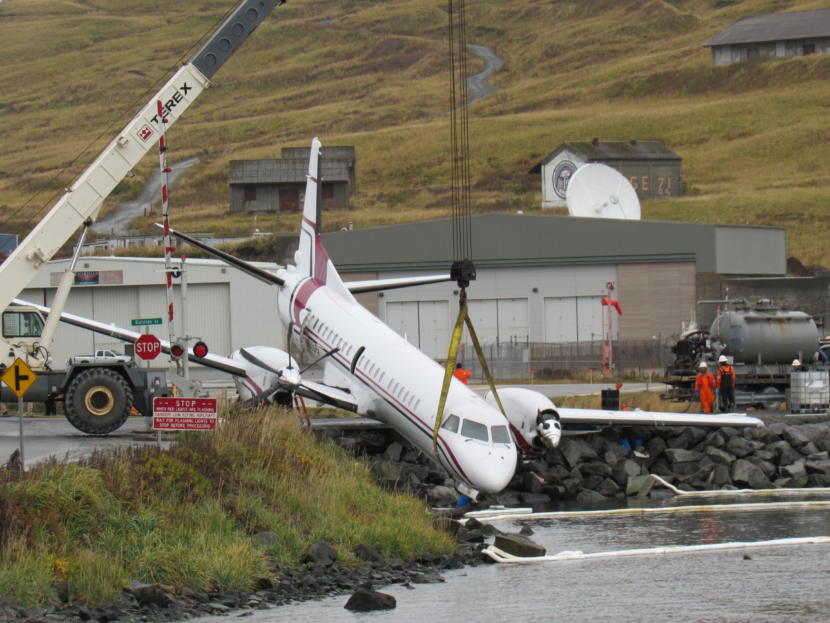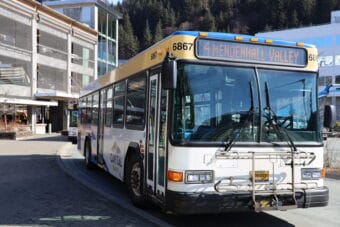
Faulty wiring, lax oversight by regulators and inexperienced crew were all factors leading up to Unalaska’s fatal 2019 plane crash, according to the National Transportation Safety Board. The board revealed its findings on Tuesday after a two-year investigation.
Investigators found that the PenAir Saab 2000 aircraft overran the island’s short runway because an anti-skid brake malfunctioned due to a bad wiring job. That caused a tire to burst upon landing and released brake pressure on two of the three remaining wheels, preventing the flight crew from stopping on the runway.
The crash killed one passenger and injured nine others.
NTSB Chair Jennifer Homendy said the pilot made a questionable decision to land with strong tailwinds. But also, the Federal Aviation Administration approved the plane to land on Unalaska’s runway despite it falling short of safety guidelines.
“Even though the airplane, the pilot, the weather and federal oversight all had a role in this tragedy, it was entirely preventable,” Homendy said. “The brake system should have been designed to protect against human error during maintenance, the pilot shouldn’t have landed on a runway with such a strong tailwind and federal regulators should have considered the runway safety area dimensions when authorizing the airline to fly the Saab 2000 into that airport.”
It was a blustery day at the island’s Tom Madsen Airport on Oct. 17, 2019, and the crew was making a second attempt to land on the notoriously challenging runway when they crashed.
According to investigators, the local weather observer reported a 24-knot tailwind shortly before the plane touched down — that’s faster than the airplane manufacturer’s operating limit. The pilots did it anyway, landing with a tailwind later estimated at 15 knots.
The pilot and co-pilot were inexperienced on the island route. Both men had about 100 hours of flight time into Unalaska — far less than the 300 hours historically required by the route’s former carrier, PenAir. That company had sold the airline to RavnAir Group the year before that fatal flight.
The NTSB said the decision to land with such a tailwind was “intentional, inappropriate” and indicative of a bias to continue their original plan in spite of evidence that they should reconsider.
At their meeting Tuesday, the five-member transportation safety board unanimously approved 10 safety recommendations to avoid similar accidents in the future. Six of those are for the FAA, three for the European Union Aviation Safety Agency and one for Saab, the aircraft’s manufacturer.
“The only way we’re going to prevent a future accident is by making sure these recommendations are implemented, and we’ll do all we can to make sure that’s done,” Homendy said.
The final NTSB report will be published on the agency’s website in coming weeks.
PenAir Flight 3296 was operated by a RavnAir Group subsidiary, which bought PenAir’s name and assets after PenAir declared bankruptcy in 2018.
RavnAir Group also went bankrupt in the months after the crash. It was subsequently rebooted with a similar name under new management and ownership structure from a different investor group.



